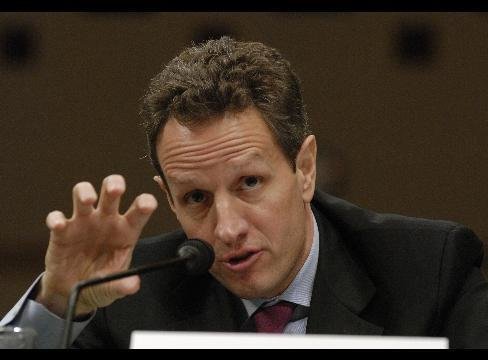
In his review of the Geithner-Summers Plan to remove toxic assets from the banks, NY Times columnist Joe Nocera writes (March 28, p. B8), "As for the complaint that it will make rich guys richer, well, you can't win 'em all." If Nocera had looked at alternatives that many of us have been suggesting and if he still concluded that helping rich guys get richer was the only conceivable strategy, his attitude might be acceptable. But he does no such thing. He did not explore alternatives. Nor did he explain to his readers that the taxpayer transfers to make "rich guys richer" could amount to tens, or hundreds, of billions of dollars of the public's money, massive transfers that are avoidable.
Geithner and Summers are proposing to use government loans to finance investors to buy toxic assets. This is fine. The question is the terms. If the loans were going to large and well-capitalized investment funds, whose overall capital base would back the repayment of the government loans, the plan would have merit of providing liquidity to the market for toxic assets. Instead, the government loans by design will go to poorly capitalized special investment funds set up specially to buy toxic assets. The approach is tailor-made to leave the FDIC and Fed with massive losses. Since the taxpayer losses will be hidden on the balance sheets of the FDIC and Fed, the tens or hundreds of billions of dollars of taxpayer losses will not be recognized until the program is long forgotten by the public.
The cheaper and more equitable way would be to make shareholders and bank bondholders take the hit rather than the taxpayer. The Fed and other bank regulators would insist that bad loans be written down on the books. Bondholders would take haircuts, but these losses are already priced into deeply discounted bond prices. The government could provide new loans to blue-chip investors to buy up the toxic assets at a deep discount, but the government's loans would have to be repaid by the investors whether or not the toxic assets pay off. In the current plan, the investors are allowed to default on the government loans if the toxic assets perform badly.
Investors would of course bid less for these assets than under the Geithner-Summers plan, so that the banks and bondholders would get less, but the taxpayer would also be left much less exposed. If the write-downs of the bad assets force the bank into insolvency, the FDIC would pump in public capital to keep the bank operating without interruption. Even in that case, however, the solution would be cheaper than under the current plan, since the taxpayers rather than the existing shareholders would be the claimants on the bank's assets.
We all know the end of the story as it's now being written with an overpriced rescue of the banks. When it comes time for health care reform, education funding, infrastructure rebuilding, and (heaven forbid) help for the world's poor and dying people, there will be no fiscal space. Budgets will be tight. Spending that helps make rich guys richer while leaving the poor to die of hunger and disease seems to be par for the course in our Wall-Street-besotted public policy.
Last week I stood in a village in Africa where the mines had closed and people had nothing to eat. Pleading eyes looked into mine. Those are the eyes that I still see when I read Nocera's flippant acceptance of shoveling taxpayer funds to the undeserving rich.